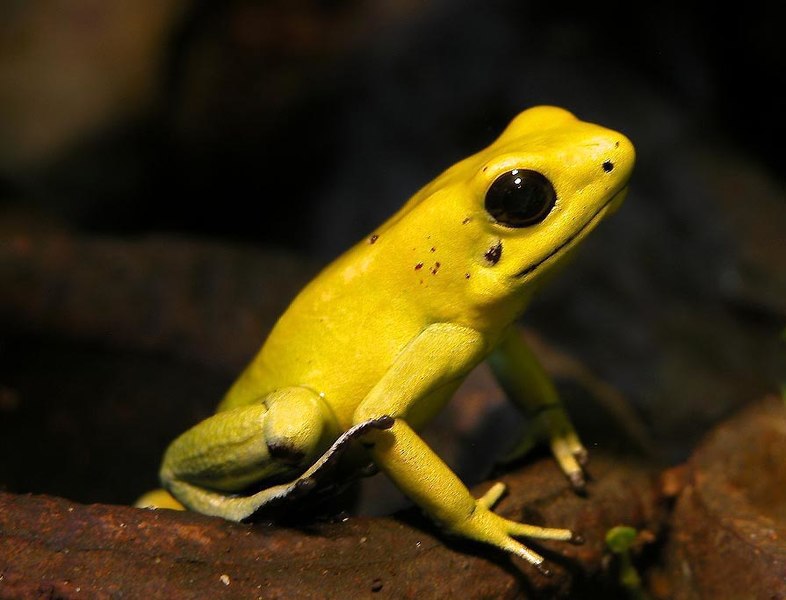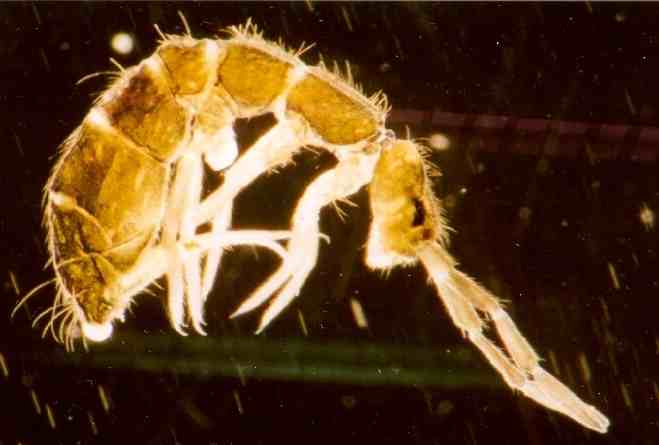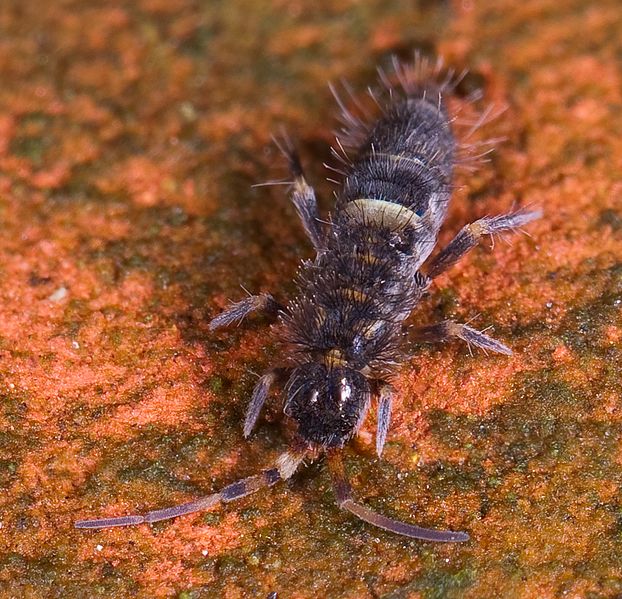Central and South American frogs of the family Dendrobatidae secrete virulent skin toxins (histrionicotoxins, batrachotoxins and others) when disturbed. Many people believe that the toxins of many species of Poison Frogs, known also as “Poison Arrow Frogs” and “Dart Poison Frogs”, were once used to coat darts and arrows used in hunting and warfare. Actually, this is not the case – but the actual facts are no less interesting.
Origin of Frog Toxins
Poison Frog toxins are derived from the diet, being concentrated and synthesized from chemicals within the ants and millipedes (and possibly other invertebrates) upon which the frogs feed. Wild-caught frogs gradually lose their protective toxins after a time in captivity… captive-born Poison Frogs do not develop toxic skin secretions unless they are fed the appropriate types of invertebrates.
Some years ago, I was fortunate enough to be at the National Aquarium in Boston when the origin of Poison Frog toxins was being investigated. In one experiment, Green and Black Poison Frogs (Dendrobates auratus) that had lost their skin toxicity were liberated in the aquarium’s huge rainforest exhibit. When recaptured some time later, the frogs had regained their potent skin toxins. Studies showed that the source of these toxins were invertebrates that had been transported to the exhibit in soil and on tropical plants.
Toxin Use in Hunting
The use of frog toxins on hunting darts was first reported in the literature in 1823, by British naval captain C. Cochrane. He reported that certain forest-dwelling people collected Golden Poison Frogs (Phyllobates terribilis) and confined and fed the frogs until toxins were needed. The frogs were pierced with a stick in order to induce the secretion of the toxins, which appeared as white froth on the skin.
Up to 50 darts could be treated with the secretions from a single frog, and the darts were reported to retain their potency for at least 1 year. A jaguar shot with a poison-coated dart was said to die within 4-5 minutes, and monkeys and smaller animals were killed instantly.
Darts, and not arrows, were utilized for hunting…toxin use on arrows shot from bows has never been observed.
Toxins were used in this manner by the Mucushi, Chaco and, possibly, other groups of people.
Toxins and Warfare
It comes as a surprise to many folks that frog toxins have never been documented as being used in wars or against human enemies.
Frog Species Utilized
 The skin secretions of only 3 species of frog have been identified as being used as dart coatings. These frogs are not, as often believed, the familiar Dendrobates species, but rather belong to the related genus Phyllobates. Frogs belonging to this genus are less commonly seen in the pet trade than Dendrobates, although one, the Golden Poison Frog (P. terribilis), is fairly well-established in captivity.
The skin secretions of only 3 species of frog have been identified as being used as dart coatings. These frogs are not, as often believed, the familiar Dendrobates species, but rather belong to the related genus Phyllobates. Frogs belonging to this genus are less commonly seen in the pet trade than Dendrobates, although one, the Golden Poison Frog (P. terribilis), is fairly well-established in captivity.
Medicines from Frog Skin
The skin toxins of a great many frogs, related and unrelated to the Dendrobatids, are highly complex and are being studied with a view towards developing medications that may be useful in oncology and infectious disease research. A compound derived from the secretions of the Phantasmal Poison Frog (Epipedobates tricolor) shows great promise as a pain medication…it is more effective than morphine, non-addictive and non-sedating.
Further Reading
You can read more about studies on the medicinal value of frog toxins here.
Golden Poison Frog image referenced from wikipedia and originally posted by Wilfried Berns
 I’ve received a number of questions lately from herp enthusiasts (and “regular people”!) who have come across cold-stunned reptiles and amphibians in Florida. Cuban Knight Anoles, Green Tree Frogs and many other species have been severely impacted by the record-breaking cold weather.
I’ve received a number of questions lately from herp enthusiasts (and “regular people”!) who have come across cold-stunned reptiles and amphibians in Florida. Cuban Knight Anoles, Green Tree Frogs and many other species have been severely impacted by the record-breaking cold weather. That Reptile Blog – Reptile, Amphibian and Exotic Pet Care and Information
That Reptile Blog – Reptile, Amphibian and Exotic Pet Care and Information

 Springtails are minute, primitive, wingless insects classified in the Order Collembola. Over 6,000 species are found in most temperate and tropical habitats, where they figure importantly in the diets of Poison Frogs (Dendrobates, Phyllobates, Oophaga), small salamanders and newly metamorphosed amphibians of many kinds. Please see
Springtails are minute, primitive, wingless insects classified in the Order Collembola. Over 6,000 species are found in most temperate and tropical habitats, where they figure importantly in the diets of Poison Frogs (Dendrobates, Phyllobates, Oophaga), small salamanders and newly metamorphosed amphibians of many kinds. Please see  I’m frequently contacted by amphibian keepers who find that their pets are floating about at the water’s surface and seem unable to submerge. While gas produced by bacteria within the animal can cause this, the most frequent culprit is Gas Bubble Disease. This term is sometimes used to refer to any of several related but different maladies, and commonly afflicts African Clawed Frogs (Xenopus laevis), Dwarf Clawed Frogs (Hymenochirus spp.) and Mexican Axolotls (Ambystoma mexicanum).
I’m frequently contacted by amphibian keepers who find that their pets are floating about at the water’s surface and seem unable to submerge. While gas produced by bacteria within the animal can cause this, the most frequent culprit is Gas Bubble Disease. This term is sometimes used to refer to any of several related but different maladies, and commonly afflicts African Clawed Frogs (Xenopus laevis), Dwarf Clawed Frogs (Hymenochirus spp.) and Mexican Axolotls (Ambystoma mexicanum).  The diets of captive Poison Frogs (Dendrobates, Phyllobates, Oophaga), Mantellas, small salamanders (i.e. Red-Backed Salamanders) and tiny, newly-transformed amphibians are usually limited to the two readily available foods of appropriate size – pinhead crickets and fruit flies. The minute, wingless insects known as Springtails (Order Collembola) are easy to procure and rear, and offer a convenient means of increasing dietary variety for small amphibians.
The diets of captive Poison Frogs (Dendrobates, Phyllobates, Oophaga), Mantellas, small salamanders (i.e. Red-Backed Salamanders) and tiny, newly-transformed amphibians are usually limited to the two readily available foods of appropriate size – pinhead crickets and fruit flies. The minute, wingless insects known as Springtails (Order Collembola) are easy to procure and rear, and offer a convenient means of increasing dietary variety for small amphibians. Some amphibians are so small that even pinhead crickets prove too large a meal. I’ve run into this situation with Kihansi Spray Toads (Nectophrynoides asperginis), which are a mere ¾ inch long when full grown. These toads, now likely extinct in the wild, give birth to fully formed toadlets that are so small as to be barely visible. A steady supply of Springtails was essential to the successful rearing of these Tanzanian natives, the last of their kind on earth. Folks breeding other tiny amphibians, such as Strawberry Poison Frogs (Oophaga pumilio), will also find Springtail colonies an invaluable resource.
Some amphibians are so small that even pinhead crickets prove too large a meal. I’ve run into this situation with Kihansi Spray Toads (Nectophrynoides asperginis), which are a mere ¾ inch long when full grown. These toads, now likely extinct in the wild, give birth to fully formed toadlets that are so small as to be barely visible. A steady supply of Springtails was essential to the successful rearing of these Tanzanian natives, the last of their kind on earth. Folks breeding other tiny amphibians, such as Strawberry Poison Frogs (Oophaga pumilio), will also find Springtail colonies an invaluable resource. The skin secretions of only 3 species of frog have been identified as being used as dart coatings. These frogs are not, as often believed, the familiar Dendrobates species, but rather belong to the related genus Phyllobates. Frogs belonging to this genus are less commonly seen in the pet trade than Dendrobates, although one, the Golden Poison Frog (P. terribilis), is fairly well-established in captivity.
The skin secretions of only 3 species of frog have been identified as being used as dart coatings. These frogs are not, as often believed, the familiar Dendrobates species, but rather belong to the related genus Phyllobates. Frogs belonging to this genus are less commonly seen in the pet trade than Dendrobates, although one, the Golden Poison Frog (P. terribilis), is fairly well-established in captivity.